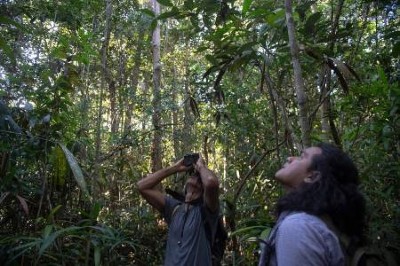[ad_1]
On 16 April, the Brazilian National Research Council (CNPq) announced a bold initiative to combat the brain drain in Brazilian academia. Over five years, the talent-repatriation programme will invest 1 billion reais (US$190 million) into encouraging expatriated scientists to return to Brazil and expanding collaborations with Brazilian researchers overseas. In 2023, more than 35,000 academics were expats, or 14% of those active in research in Brazil.
As one such researcher, currently a biologist in the United Kingdom and a honorary professor in Brazil, I welcome these grants. But I know that a temporary injection of money alone will not solve the problem. What will happen after the five years? Brazil has too few tenure-track positions to sustain the returnees’ careers.
Brazil budget cuts could leave science labs without power and water
Short-termism has hampered previous initiatives to internationalize science in Brazil. For example, from 2011 to 2017, Brazil’s Science without Borders programme provided more than 100,000 scholarships to Brazilian students to study overseas. I was an early recipient, using it to pursue research in Italy and the United Kingdom. But there was no guaranteed position afterwards.
In my view, expats will not return in numbers until the Brazilian academic system is reformed. Achieving change in Brazil’s polarized political landscape is challenging but essential for fostering a vibrant academic environment.
The two streams of the repatriation programme demonstrate the problem. The first, with an 800-million-reai budget, covers salary and project costs for up to five years for academics and industry professionals seeking to return to Brazil. It is clearly aimed at researchers who are not yet established, but neither the CNPq nor public universities guarantee support after the term. The second stream, with a budget of 200 million reais, aims to foster partnerships between expatriate and resident researchers or industry partners. This might appeal to tenured academics overseas, but it offers no incentives for their permanent return.
In a wider context, it seems likely that the repatriation programme might have another aim — to lower the litigation costs relating to CNPq international scholarships. Brazil regards international scholarships as benefits that must be repaid. On signing the contract, recipients commit to returning to Brazil to further its science. If they do not fulfil this obligation, the CNPq can pursue legal action, requiring them to repay the scholarship amount.
In Brazil, one in two female researchers has faced sexual harassment
Since 2016, the CNPq has offered an alternative pathway to returning, called ‘Novation’. Scholarship holders outside Brazil can substitute their obligation with approved activities that benefit Brazilian science, such as supervising and teaching students in Brazil — as I do. Some expatriates do neither, resulting in heavy costs (millions of reais per year) for the CNPq and other funding bodies.
In 2023, the CNPq reached out to expatriates to explore other ways to enforce these obligations. In this context, I interpret the repatriation programme as a way for the CNPq to financially help expatriates seeking to rectify their status to avoid legal action and contribute to Brazilian science. In this regard, the CNPq’s programme is generous. However, the initiative does not address the reasons many academics move abroad, including inadequate support for researchers in Brazil and the lure of higher salaries elsewhere.
A scarcity of tenure-track positions in public institutions — staff members with such positions being responsible for more than 95% of Brazil’s scientific output — compounds these issues. In 2022, the ministry of education estimated a deficit of around 11,000 jobs for technical and tenured staff. Bureaucratic and opaque recruitment processes for tenure-track roles, known as concurso publico, exacerbate inequity. Individuals who are not fluent in Portuguese, including Indigenous and international researchers, are rarely hired.
Although exceptions exist, such as the São Paulo Research Foundation (FAPESP) with its generous budgets, funding in Brazil is scarce, and awards are often modest. Public-university infrastructure is underfunded. Low salaries have triggered a national strike among public university staff, and postdocs lack basic employment benefits such as pensions. Collectively, these factors contribute to an insular academic system that aspires to be globally competitive but lacks the institutional processes and support to do so.
Big science in Latin America: accelerate particles and progress
If Brazil recruited researchers in a more equitable and transparent way — as is done in the United States, United Kingdom and European Union — it would be better able to attract returning expats. It could issue fairer wages and benefits to postdoctoral researchers. The influx of ideas, perspectives and experiences would benefit academia and society.
A stronger research system would also attract international funding and strategic partnerships — two of the CNPq’s goals. The CNPq could look to FAPESP’s international partnerships with the US National Science Foundation and UK Research and Innovation, for example.
Brazil’s government has promised more funding for science and technology. A constitutional amendment, led by former minister of science and technology and astronaut Marcos Pontes and presented to the Senate last July, aims to double the allocation of resources to science and technology, to reach 2.5% of Brazilian gross domestic product by 2033.
To reap the benefits, action is needed now. Collective effort from academics, ministries and research councils to solve these challenges will pave the way for meaningful change to benefit all Brazilian scientists.
Competing Interests
The author declares no competing interests.
[ad_2]
Source Article Link








